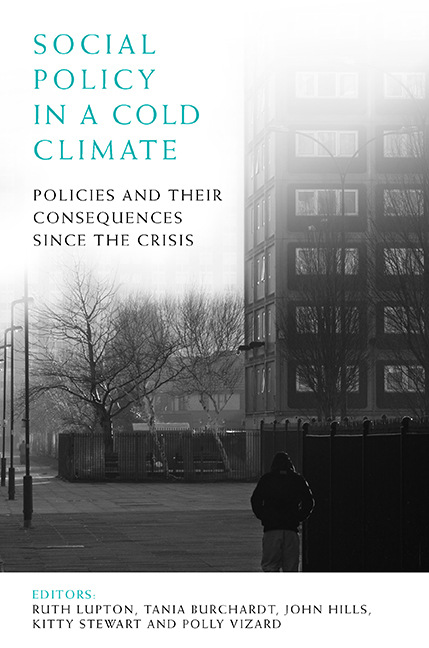Nine - Adult social care
Published online by Cambridge University Press: 01 September 2022
Summary
The situation on the eve of the crisis
In 2007/08, just before the financial crash unfolded, spending on adult social care in England had reached £20 billion (in 2014/15 prices) after a period of sustained budget increases under Labour in response to the expanding ageing and working-age disabled populations, and in recognition of the historic under-investment in social care. This was providing services to 1.8 million adults, including some of the most vulnerable people in our society: the oldest of the old, younger physically disabled people, people with mental illness or cognitive impairments, and people with drug and/ or alcohol problems.
Complexity in the financing and provision of social care, especially long-term care, was a widely acknowledged problem. Boundaries between the NHS and local authority services, between residential and community care (including domiciliary or home care), between universal and means-tested entitlements and privately paid care, and between formal services and unpaid care provided by family and friends, combined to produce considerable uncertainty among people in need of care and their families about what services they might receive and how much they would be required to pay. Major commissions and inquiries at a rate of one per decade (Griffiths, 1988; Sutherland, 1999; The King's Fund, 2006) had produced recommendations for reform, but none had been fully implemented, as a result of lack of crossparty support or due to concerns about the cost to the public purse. However, in Scotland, the Sutherland Commission's recommendation to fund personal care costs from direct taxation while retaining meanstesting for housing and living costs was adopted in 2002 for people aged 65 or over.
Meanwhile, the trend away from direct provision by local authorities and increasing use of private and not-for-profit providers was continuing (HSCIC, 2014a, Figures 4.5 and 5.1), as was the increase in the number of people receiving payments from local authorities with which to arrange their own care (‘direct payments’). Between 2000/01 and 2008/09, there had been more than a 10-fold increase in the number of working-age people using direct payments, and an even faster increase among the over-65s (from a much lower base), so that by the end of this period there were more than 86,000 recipients of direct payments in England (HSCIC, 2014a, Annex M).
- Type
- Chapter
- Information
- Social Policy in a Cold ClimatePolicies and their Consequences since the Crisis, pp. 187 - 214Publisher: Bristol University PressPrint publication year: 2016

